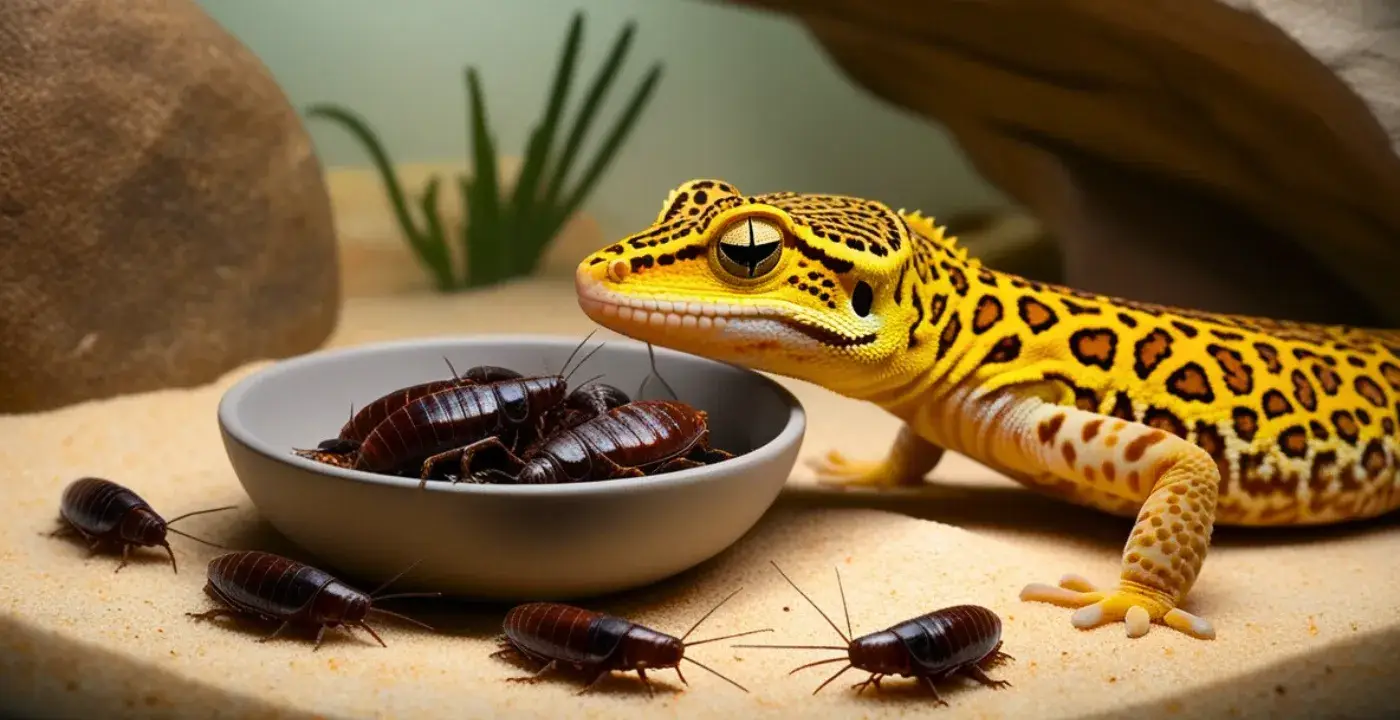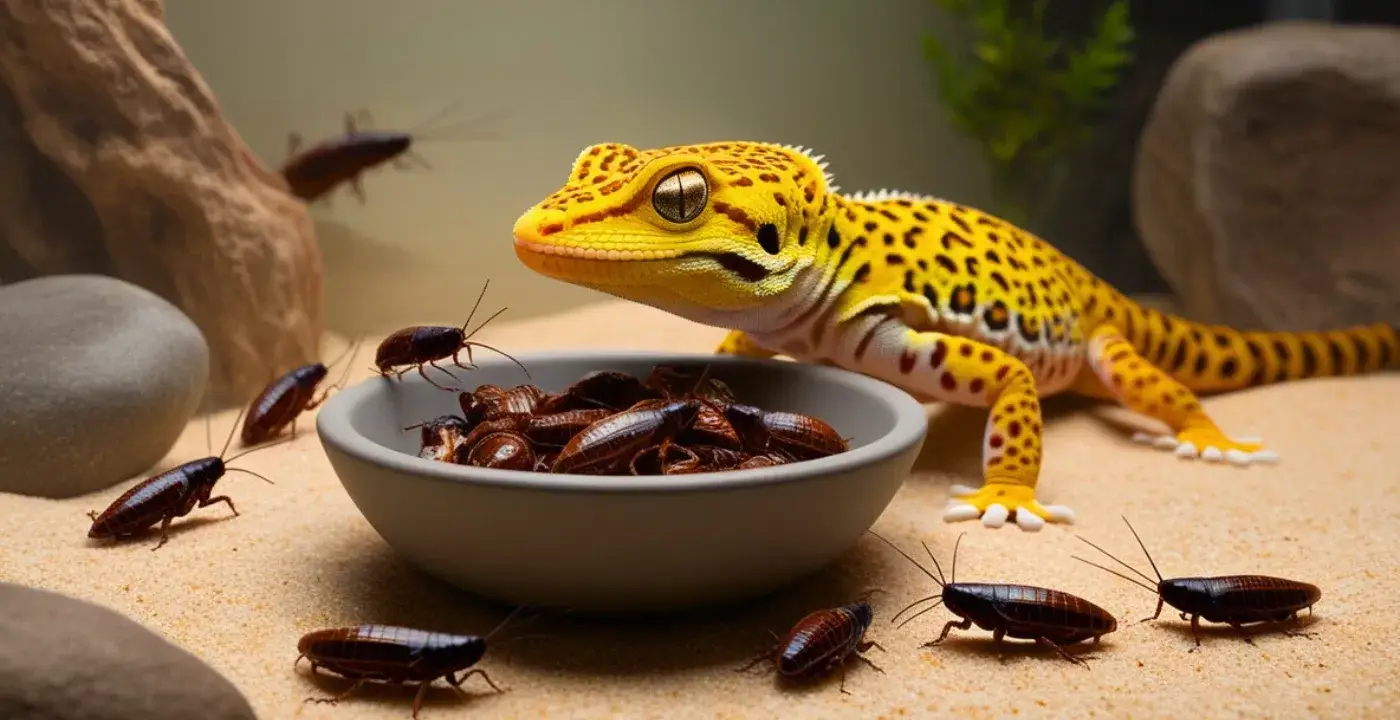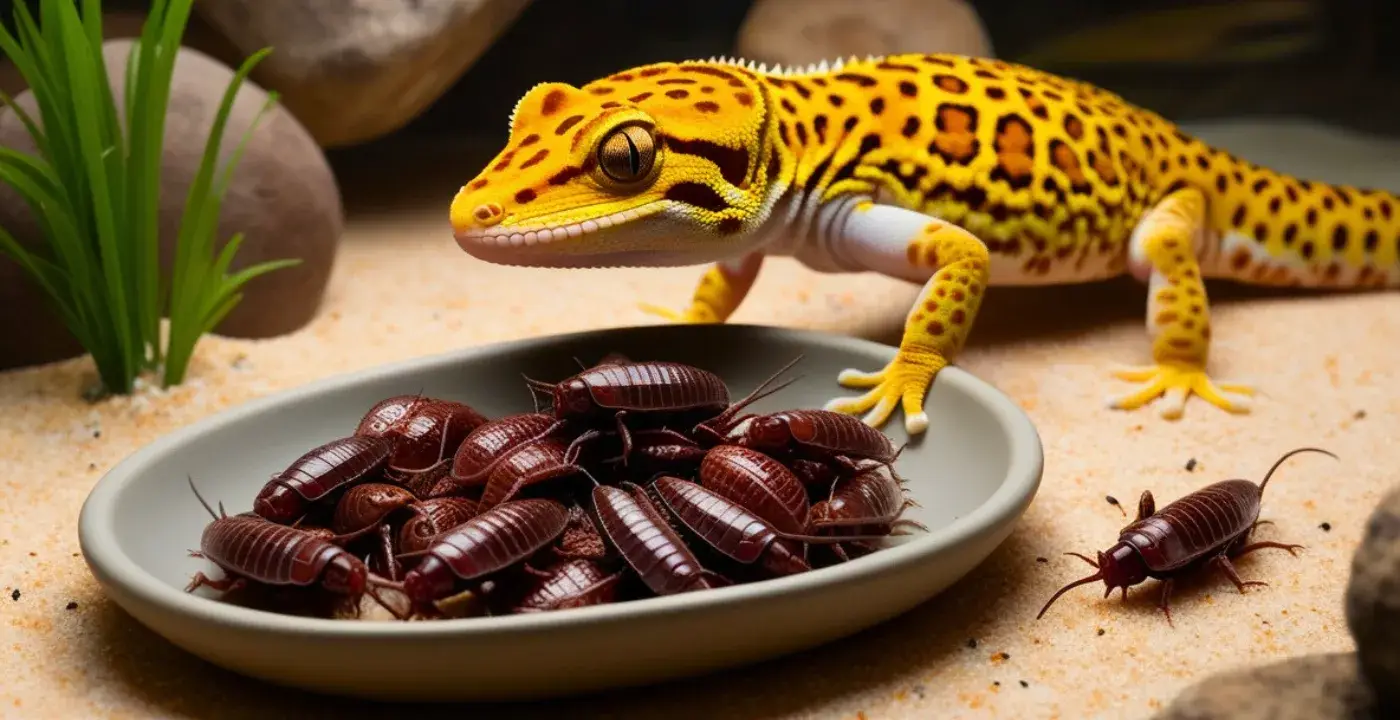Leopard geckos are one of the most popular reptile pets, known for their docile nature and striking patterns. But as a responsible pet owner, you might wonder: How many Dubia roaches should I feed my leopard gecko? This question is crucial because proper nutrition is the cornerstone of your gecko’s health and longevity. Dubia roaches are a highly nutritious feeder insect, but feeding them in the right quantity and frequency is key to ensuring your gecko thrives.
In this comprehensive guide, we’ll dive into everything you need to know about feeding Dubia roaches to your leopard gecko. From understanding their nutritional benefits to determining the ideal feeding schedule, this post will equip you with the knowledge to make informed decisions for your pet.
Why Dubia Roaches Are a Great Choice for Leopard Geckos

Dubia roaches (Blaptica dubia) have gained popularity among reptile enthusiasts as a staple feeder insect. But what makes them so special?
Nutritional Benefits
Dubia roaches are packed with protein, essential amino acids, and healthy fats, making them an excellent food source for leopard geckos. They also have a favorable calcium-to-phosphorus ratio, which is critical for preventing metabolic bone disease—a common issue in reptiles.
Compared to other feeder insects like crickets or mealworms, Dubia roaches are less likely to carry parasites and have a softer exoskeleton, making them easier to digest.
Convenience and Longevity
Unlike crickets, Dubia roaches are quiet, don’t smell, and can live for months with proper care. This makes them a convenient option for pet owners who want to maintain a steady supply of feeder insects.
How Many Dubia Roaches Should You Feed Your Leopard Gecko?

The number of Dubia roaches to feed your leopard gecko depends on several factors, including its age, size, and activity level. Here’s a breakdown:
Feeding Juvenile Leopard Geckos
Juvenile leopard geckos (under 6 months old) are growing rapidly and require more frequent feedings. They should be fed daily, with the number of roaches adjusted based on their appetite.
- Quantity: 5–10 small Dubia roaches per day.
- Size: The roaches should be no larger than the space between your gecko’s eyes to prevent choking.
Feeding Adult Leopard Geckos
Adult leopard geckos (over 1 year old) have slower metabolisms and don’t need to eat as often. Overfeeding can lead to obesity, which is a common health issue in captive geckos.
- Quantity: 3–5 medium-sized Dubia roaches every other day.
- Size: The roaches can be slightly larger but still manageable for your gecko to consume comfortably.
Adjusting Based on Activity and Health
If your gecko is particularly active or recovering from an illness, it may require more food. Conversely, a less active or overweight gecko may need fewer roaches. Always monitor your pet’s weight and adjust accordingly.
Step-by-Step Guide to Feeding Dubia Roaches
Feeding Dubia roaches to your leopard gecko is straightforward, but there are a few best practices to ensure your pet gets the most out of its meals.
Step 1: Choose the Right Size
As a rule of thumb, the roaches should be no wider than the space between your gecko’s eyes. This prevents choking and ensures easy digestion.
Step 2: Gut-Load the Roaches
Gut-loading involves feeding the roaches nutrient-rich foods 24–48 hours before offering them to your gecko. This enhances their nutritional value. Suitable gut-loading foods include:
- Leafy greens (e.g., kale, collard greens)
- Vegetables (e.g., carrots, sweet potatoes)
- Commercial gut-load products
Step 3: Dust with Calcium and Vitamin Supplements
Leopard geckos require additional calcium and vitamins to stay healthy. Lightly dust the roaches with a calcium supplement (with vitamin D3) 2–3 times a week and a multivitamin supplement once a week.
Step 4: Offer the Roaches Using Feeding Tongs
Using feeding tongs prevents the roaches from escaping and allows you to monitor how many your gecko eats. It also reduces the risk of accidental bites.
Step 5: Remove Uneaten Roaches
If your gecko doesn’t eat all the roaches within 15–20 minutes, remove the uneaten ones to prevent them from bothering your pet or hiding in the enclosure.
Common Questions and Misconceptions
Can Dubia Roaches Bite My Leopard Gecko?
Dubia roaches are not aggressive and rarely bite. However, it’s still a good idea to supervise feedings to ensure your gecko is safe.
Are Dubia Roaches Better Than Crickets?
While both are nutritious, Dubia roaches are often preferred because they are easier to digest, less noisy, and less likely to carry parasites.
Can I Feed My Leopard Gecko Only Dubia Roaches?
While Dubia roaches are an excellent staple food, it’s best to offer a varied diet. Supplement with other feeder insects like mealworms, waxworms, or black soldier fly larvae to provide a range of nutrients.
Tips for Storing and Caring for Dubia Roaches
To ensure your Dubia roaches remain healthy and nutritious for your gecko, follow these care tips:
- Housing: Keep them in a well-ventilated container with a secure lid.
- Temperature: Maintain a temperature of 80–90°F (27–32°C) for optimal breeding and growth.
- Food and Water: Provide fresh fruits, vegetables, and a water source (e.g., water crystals) to keep them hydrated.
- Cleaning: Regularly clean the enclosure to prevent mold and bacteria buildup.
Final Thoughts
Feeding your leopard gecko the right number of Dubia roaches is essential for its health and well-being. By understanding your gecko’s nutritional needs and following the guidelines outlined in this post, you can ensure your pet thrives.
Remember, every gecko is unique, so pay attention to its behavior and adjust the feeding schedule as needed. If you’re ever unsure, consult a reptile veterinarian for personalized advice.
Call to Action
We hope this guide has answered your questions about feeding Dubia roaches to your leopard gecko. If you found this information helpful, share it with fellow reptile enthusiasts or leave a comment below with your experiences. For more tips on reptile care, explore our related posts or subscribe to our newsletter for regular updates Drguidez.

Mark Manson is an expert blogger specializing in Dubia Roaches. He shares practical care tips, breeding insights, and feeding advice to help enthusiasts and reptile owners thrive.

